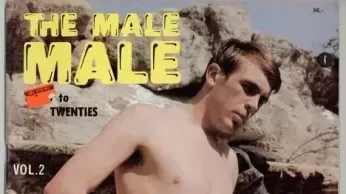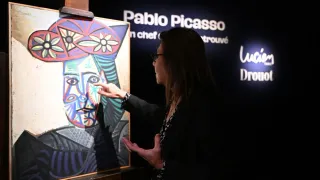
4 hours ago
The Queer Collectors: From Vinyl to Vintage Erotica
READ TIME: 3 MIN.
For generations, LGBTQ+ individuals have turned to collecting as a means of self-expression, community building, and cultural preservation. Whether it’s rare vinyl by queer musicians, handmade zines, or underground erotica, these collections serve as living archives—testaments to resilience, creativity, and the ongoing struggle for visibility. In the absence of mainstream acknowledgment, these artifacts become crucial links to a shared past, offering queer people a sense of belonging and continuity across time and space .
Vinyl records occupy a central place in the queer collector’s world, both for their aural warmth and their power to document LGBTQ+ musical history. For many, the act of collecting records goes beyond fandom—it’s about creating an archive that affirms identity and provides a counter-narrative to mainstream music history.
Recent features have highlighted vinyl albums by openly LGBTQ+ artists like Janelle Monáe, whose releases, such as “The Age of Pleasure,” are celebrated for their sensual exploration of queer identity, with exclusive pressings coveted by fans . Collectors are also drawn to works by queer supergroup boygenius, whose limited edition vinyl comes packaged with zines and band photos, creating an immersive, affirming experience that extends beyond the music itself .
Historical research into the collections of lesbian musicians and activists in the 1970s and 1980s reveals that vinyl collecting was often a statement of both fandom and identity. Female collectors frequently sought out records by women artists, especially those whose work challenged gender norms or who were themselves part of the LGBTQ+ community. Albums by Odetta, Joan Armatrading, Aretha Franklin, and k.d. lang found a place alongside androgynous icons like David Bowie, whose gender-bending style resonated deeply with queer listeners. The organization and curation of these collections, often mixing male and female artists without segregation, embodied a claim to queer equality within the broader cultural canon .
In eras when open expression of queer identity was met with legal and social peril, LGBTQ+ collectors relied on underground networks to obtain music and other cultural artifacts. Record labels such as Camp Records in the 1960s produced and distributed music specifically for gay and lesbian audiences, but always discreetly—albums were sold via mail order and shipped in plain packaging to protect buyers’ privacy .
This culture of secrecy extended to other forms of queer ephemera and erotica. Early collectors often risked personal safety to acquire, trade, and preserve materials that would otherwise have been destroyed or lost. These clandestine archives helped foster a sense of solidarity and underground community, providing rare glimpses into desires and identities that mainstream culture refused to acknowledge .
While vinyl records are perhaps the most celebrated facet of queer collecting, the tradition encompasses a wide array of materials, from political zines and protest flyers to vintage erotica and personal correspondence. Organizations like the Rainbow History Project and the GLBT Historical Society curate vast collections of LGBTQ+ ephemera, including posters, photographs, magazines, and even artifacts from activist movements and nightclubs .
Archival collections at universities and community centers document everything from the rise of gay choruses to the work of Black lesbian feminist authors such as Terri L. Jewell, whose poetry and essays appeared in dozens of publications. These archives provide essential resources for researchers, artists, and community members seeking to understand the full spectrum of queer experience .
Vintage erotica, meanwhile, occupies a complex place in queer collections. For decades, LGBTQ+ erotica was produced and circulated in defiance of censorship laws, often providing one of the only representations of same-sex desire available to many people. Today, these works are recognized not only for their erotic content but also for their role in sustaining queer culture and offering alternative narratives of pleasure and intimacy .
In recent years, the work of queer collectors has gained new visibility and urgency as institutions and individuals collaborate to digitize, exhibit, and interpret LGBTQ+ archives. Digital collections allow for broader access, while community-driven projects ensure that the diversity of queer experiences is foregrounded. Collectors today are motivated by a desire both to honor the past and to ensure that future generations have access to the artifacts and stories that shaped queer life .
The ongoing popularity of vinyl among LGBTQ+ youth, for example, reflects not just nostalgia but a desire to reconnect with the tactile, communal aspects of music and culture. Collectible records by queer artists are prized both for their artistry and for the sense of belonging they foster within a global community .
The collections curated by LGBTQ+ people—from vinyl to vintage erotica and beyond—do more than preserve objects; they safeguard histories, desires, and dreams that might otherwise be erased. These archives are not static—they are living, evolving spaces where queer stories are celebrated, debated, and reimagined. In cherishing and preserving the artifacts of queer culture, collectors ensure that the richness and resilience of LGBTQ+ lives will echo for generations to come .






